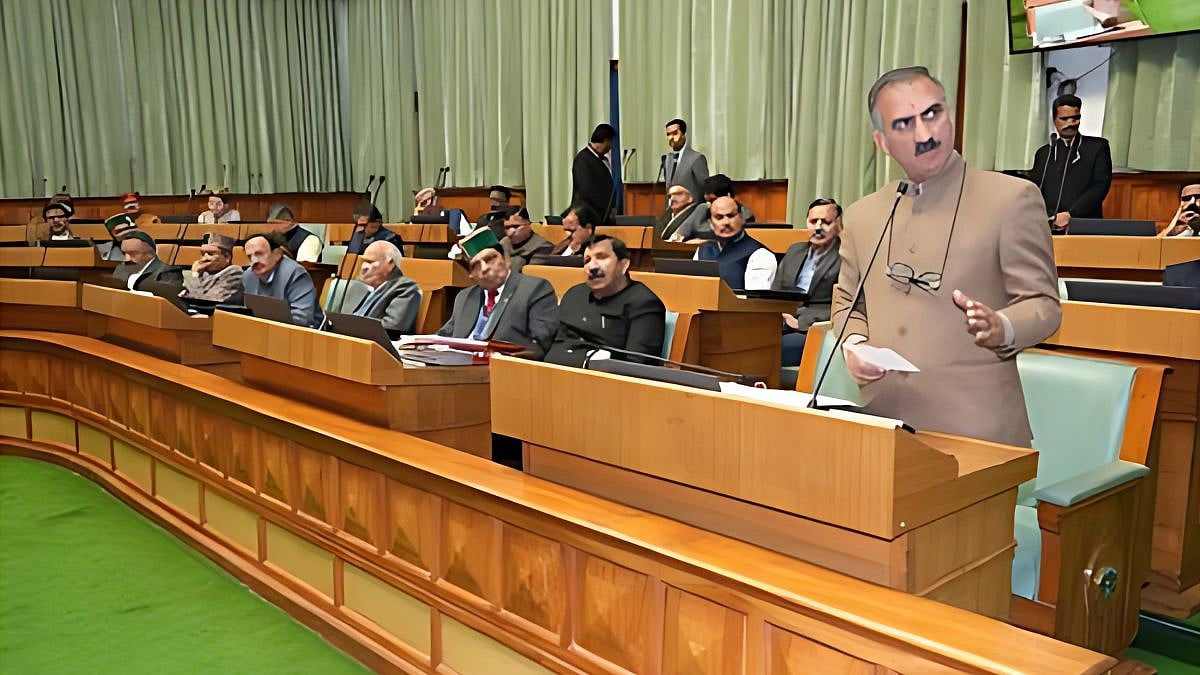Himachal’s long-standing reliance on central financial assistance for budgetary support, compounded by the failure of successive Congress and BJP governments to identify sustainable revenue streams, has led to a deepening fiscal crisis. The unchecked accumulation of debt—Rs 13,442.56 crore under the BJP in 2013-14, Rs 47,906.21 crore during the Congress tenure in 2018-19, and a staggering Rs 63,735.61 crore legacy left by the Jai Ram regime in 2021-22—has placed the Sukhu government in a precarious financial bind.
The Centre’s vindictive stance towards the Sukhu government largely stems from its decision to restore the Old Pension Scheme (OPS)—a key electoral promise that played a decisive role in the BJP’s defeat in Himachal. Adding to the friction, the BJP’s failed ‘Operation Lotus’ attempt to topple the Congress government deepened political hostilities, resulting in punitive fiscal measures. The Centre has systematically curtailed Himachal’s financial lifelines by reducing the overdraft limit, stalling the release of funds for central projects and schemes under various pretexts, delaying the Revenue Deficit Grant, and withdrawing GST compensation. Further compounding the crisis, restrictions on borrowing, prolonged delays in disaster relief funds, and inadequate financial support for infrastructure projects have severely strained the state’s economy.
Shrinking Capital Expenditure Sparks Concern
Himachal Pradesh’s capital expenditure has nosedived by forty-six point five eight percent, slashing four thousand five hundred thirty-three crore ninety-eight lakh rupees—from eight thousand four hundred eighty-five crore eighty-three lakh rupees in twenty twenty-four to twenty twenty-five to three thousand nine hundred forty-one crore eighty-five lakh rupees in twenty twenty-five to twenty twenty-six—crippling new projects. Experts blame this slump on a four thousand five hundred crore rupees allocation for disaster relief after damages surpassed ten thousand crore rupees. The revenue deficit now stands at three hundred sixty-one crore rupees (zero point eight three percent of GSDP), while the overall revenue deficit has marginally dropped by ninety-six crore rupees to six thousand three hundred ninety crore rupees (one point four three percent of GSDP). Yet, the fiscal deficit remains daunting at ten thousand three hundred thirty-eight crore rupees (four point zero four percent of GSDP), reflecting ongoing financial strain.
Controlling Expenditures for Stability
Streamlining government spending is crucial. Pension reforms, restructuring public sector undertakings (PSUs), and prioritizing capital investments over recurring expenditures can enhance fiscal health. Negotiating central grants and requesting special financial assistance could help bridge funding gaps. A balanced strategy of revenue augmentation and expenditure control is essential for long-term economic stability.
Debt Burden and Fiscal Constraints
Alarmingly, seventy percent of new borrowings are allocated to repaying old debts, leaving just Rs 8,093 crore for development projects. The rising pension liabilities and hefty interest payments—consuming nearly a third of revenue expenditure—further limit fiscal manoeuvrability. Capital investment has dropped sharply by 46.58%, from Rs 8,485.83 crore in 2024-25 to Rs 3,941.85 crore in 2025-26, restricting funding for key growth drivers.
Growth-Oriented Budget Measures
The budget introduces measures that could reshape Himachal Pradesh’s socio-economic landscape. Strengthening religious and eco-tourism aims to generate revenue and employment. A Special Task Force has been formed to curb drug abuse and maintain social stability. Infrastructure improvements, such as five hundred electric buses and the Shimla Ropeway Project, seek to enhance connectivity and urban mobility.
Pension arrears for senior citizens are being cleared as a welfare initiative, though a Rs ten thousand crore backlog in employee arrears remains a fiscal challenge. Restructuring education administration by creating separate directorates for schools and colleges is expected to improve efficiency. Social welfare programs for women, children, and the disabled reinforce the government’s commitment to inclusivity, but prudent financial management is vital for successful execution.
Strategies to Boost Revenue
To address fiscal challenges, the state must adopt a diverse revenue-generation approach. Strengthening tax compliance, rationalizing subsidies, and monetizing government assets are key. Himachal Pradesh should seek financial compensation for its ecological contributions, estimated at Rs ninety thousand crore annually. Expanding eco-tourism and religious tourism could create sustainable revenue streams, while green energy projects may attract private sector investments. Additionally, public-private partnerships (PPP).
Striking a Balance between Growth and Fiscal Prudence
Himachal’s financial distress is driven by structural and policy setbacks. A significant challenge is the steep decline in central grants, particularly the Revenue Deficit Grant (RDG), which has plummeted from Rs 10,949 crore in 2021-22 to Rs 3,257 crore in 2025-26. The cessation of GST compensation has further resulted in a Rs 9,478 crore shortfall, worsening the fiscal imbalance. The state’s total debt has climbed to Rs 1,04,729 crore, with Rs 29,046 crore borrowed under the current administration.
As against the dismal scenario, the government is striving to balance economic growth with fiscal prudence. The budget emphasizes tourism, green energy, rural development, and social welfare. However, declining capital expenditure and rising debt remain pressing concerns. By leveraging tourism, natural farming, and ecological compensation, the Sukhu administration is exploring innovative strategies to navigate fiscal challenges and drive sustainable progress.
(The writer is a senior political analyst and Strategic Affairs Columnist based in Shimla.)
